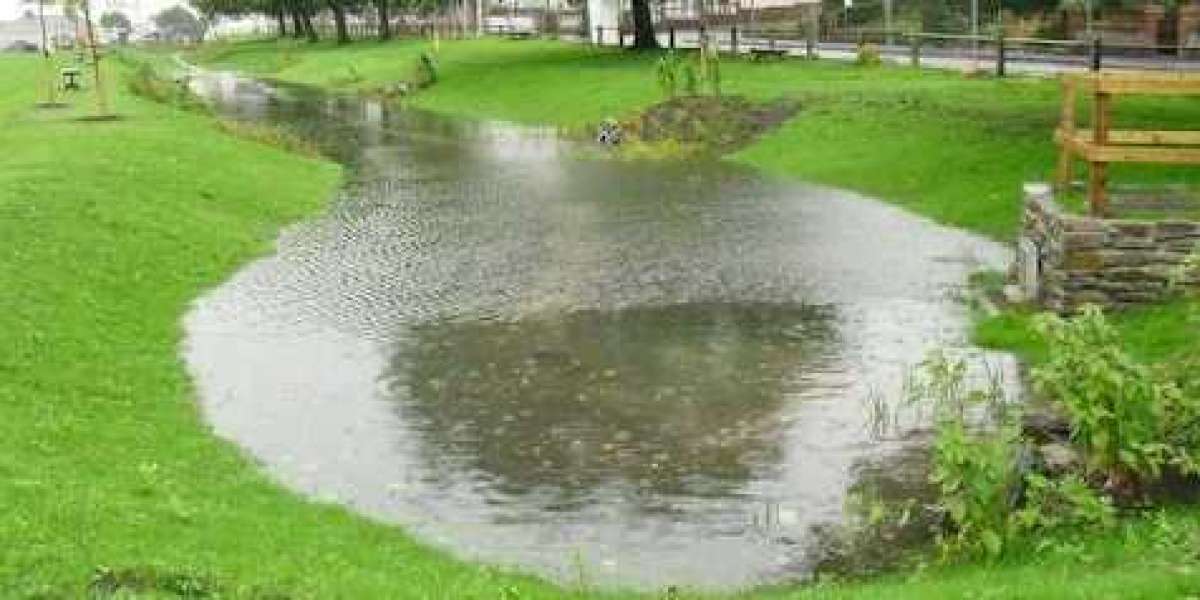In an era where climate change and urbanisation are putting unprecedented stress on our environment, innovative solutions are essential to mitigate their impact. Sustainable Drainage Systems (SuDS) emerge as a vital tool to manage rainfall and runoff in urban areas while minimising environmental degradation. In this guide, we will delve into the concept of SuDS, its benefits, and its implementation.
Understanding Sustainable Drainage Systems (SuDS)
Sustainable Drainage Systems, commonly known as SuDS, are an innovative approach to managing surface water runoff caused by heavy rainfall. Unlike traditional drainage solutions that swiftly channel rainwater into sewers, SuDS mimic natural processes, allowing water to be absorbed, filtered, and stored naturally within the landscape. By replicating natural water cycles, SuDS reduce the risk of flooding, enhances water quality, and promotes biodiversity within urban environments.
Benefits of SuDS Implementation
- Flood Risk Mitigation:
One of the most significant advantages of SuDS is its ability to alleviate flood risk. By slowing down and spreading the flow of rainwater, these systems prevent overwhelming of sewer networks and reduce the potential for flash floods during heavy downpours.
- Improved Water Quality:
SuDS incorporate features like vegetated swales, permeable pavements, and retention ponds that filter out pollutants from runoff, improving the quality of water entering local water bodies. This prevents the contamination of rivers and lakes, benefiting both humans and aquatic life.
- Biodiversity Enhancement:
SuDS create green spaces within urban landscapes, offering habitats for various plant and animal species. This not only enhances biodiversity but also provides recreational areas for the community to enjoy.
- Reduced Demand on Sewer Systems:
Traditional drainage systems often become overwhelmed during intense rainfall, leading to combined sewer overflows that release untreated sewage into water bodies. SuDS reduce this pressure on sewers, lowering the likelihood of such pollution events.
- Aesthetic and Recreational Value:
Green roofs, rain gardens, and permeable pavements not only serve functional purposes but also enhance the aesthetic appeal of urban areas. These features can transform concrete jungles into visually pleasing environments, encouraging community interaction.
Implementing SuDS: A Step-by-Step Guide
- Site Assessment:
Begin by assessing the area's topography, soil composition, and existing drainage infrastructure. Identify potential locations for SuDS elements such as permeable pavements, green roofs, and retention basins.
- Design Phase:
Collaborate with urban planners, architects, and landscape designers to create a SuDS design that suits the specific needs of the site. Balance functionality with aesthetics to achieve an integrated solution.
- Choosing SuDS Components:
There are various SuDS components to choose from, including permeable surfaces, swales, detention basins, and infiltration trenches. Select components that align with the site's requirements and local regulations.
- Incorporate Nature-Based Solutions:
Embrace nature-based solutions such as native vegetation, which enhances biodiversity and improves water absorption. Rain gardens and bioswales can be incorporated to manage runoff effectively.
- Construction and Maintenance:
During construction, ensure that SuDS components are installed correctly to function as intended. Regular maintenance is crucial to prevent blockages and ensure optimal performance. This includes removing debris, pruning vegetation, and checking for sediment buildup.
- Community Engagement:
Educate the community about the benefits of SuDS and involve them in the process. Encourage them to adopt practices like reducing pavement in their yards, which allows rainwater to infiltrate naturally.
Conclusion
Sustainable Drainage Systems (SuDS) offer a holistic approach to managing rainfall and runoff in urban areas. By integrating natural drainage solutions and innovative design, SuDS mitigate flooding, enhance water quality, and create vibrant green spaces. As cities continue to grow, the adoption of SuDS becomes imperative to build resilient and sustainable urban environments that harmonise with nature. By implementing SuDS, we take a crucial step towards a future where both people and the planet thrive in harmony.







